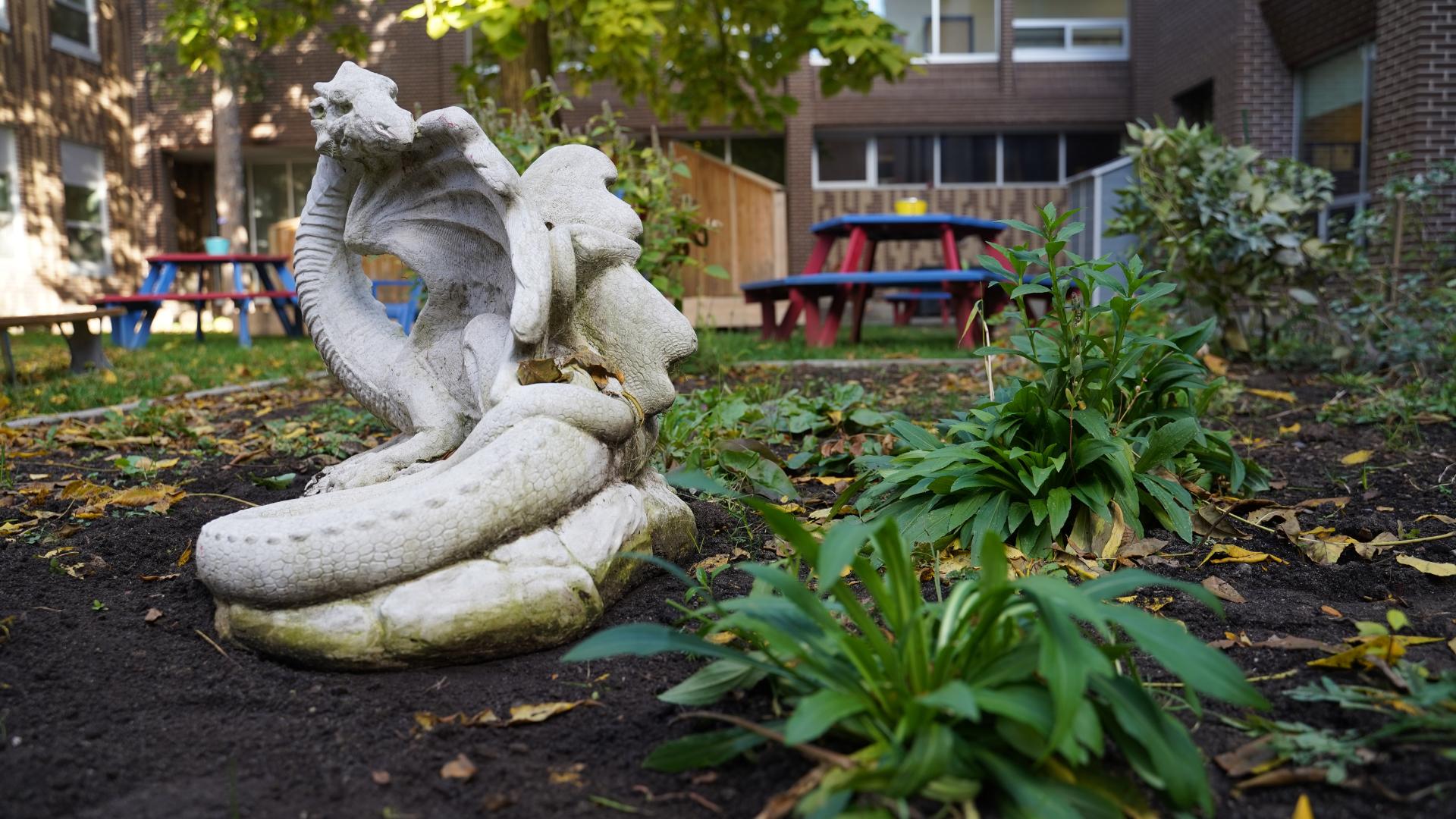When St. George’s educators first discussed redeveloping the school’s courtyard, they envisioned a calming, restorative place for everyone in the school. They never dreamed that their seed of an idea would grow into a school-wide initiative sprouting learning activities in every classroom.
The goal was to transform the sunny courtyard space into a meadow. It would be a naturalized spot for everyone and a habitat for bees, butterflies, and insects. Clare Grosskleg, a community partner, focused on the environment, served as the school’s pollinator mentor, advising students and staff as they made their plans. They also incorporated a Peace Path into the design, with signs containing positive affirmations, prayers, and the 7 Grandfather teachings.
As plans started to take shape, educators considered how they could incorporate lessons related to the project in their classes. Every class in the school was involved in some way.
- The grade 3 / 4 class participated in the SEP program, creating a business called the Bumble Squad: Kids Protecting Pollinators. They sold cards and raised funds for the school’s pollinator meadow and Wildlife Preservation Canada. In doing so, they learned math through sales, communication skills through business presentations, media literacy through advertising, and science by building a Minecraft pollinator meadow.
- Other classes designed the paths and the meadow. They chose flowers to plant that reflect the colours of the medicine wheel. They created signs for the Peace Path and chose the positive words to be included.
- Each class learned about the 7 Grandfather teachings.
- The Notre Dame woodworking class built signs of the Grandfather’s teachings to post along the Peace Path.
- The kindergarten class started seedlings in classroom tower gardens and later helped transplant them into the meadow.
- When all the planning was done, students helped prepare the space for planting.
The courtyard was named Dragon Meadow, after the school mascot. The students now have an outdoor space to practice mindfulness, pray, play, and learn. They have an area where they know they have made a difference by helping essential pollinators. They also have a space they are proud of and feel they belong.
